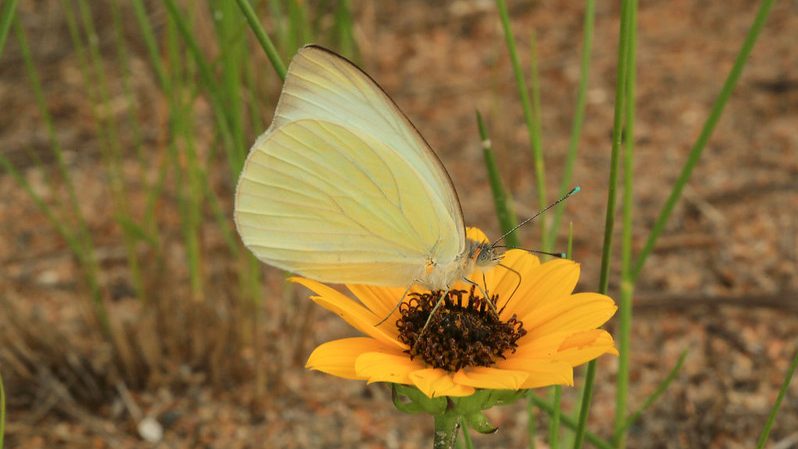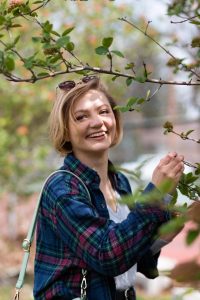For Insect’s Sake – The Importance of Incorporating Natural Elements In Our Cities

This semester, the SE CASC Global Change Fellows have worked to create science expert videos that communicate the state of the science of various landscape conservation challenges related to global change in the southeastern United States. Students chose a topic of interest, interviewed an expert in the field, and created an informative video and blog post to share what they learned. The following video and summary were created by SE CASC Global Change Fellow, Kate Gorman.
Urban Insects: Current Research and Future Directions

Written by: Kate Gorman
Interviewee: Dr. Elsa Youngsteadt (Assistant Professor and Extension Urban Ecology Specialist, NC State University)
Summary
To kick off our conversation, Dr. Elsa Youngsteadt explains how urban ecology is a relatively new field in the realm of ecology with many new and fascinating possibilities. She defines urbanization as “the conversion of land that was either previously natural or previously agricultural to built developed areas with a high population density.” She goes on to explain how the line between urban and rural is typically blurry but urban areas have a greater density of people, buildings, and an economy centered around service rather than agriculture.
We begin to discuss her excitement about the field of urban ecology and her particular fascination with her work. She believes that the most fascinating elements of her studies are what we don’t know. What questions remain after completing a project? What work is there still to be done? By the time a project is complete, the original questions begin to feel obvious and less fascinating, but the new questions inspired by the project are what remains exciting. For example, while working on a project in New York City, Dr. Youngsteadt wanted to learn how much human food and garbage ants actually consume in an urban environment. “We’ve known for centuries that ants show up and eat our crumbs at picnics, right? So it seems super obvious, but at the same time the question hadn’t really been asked ecologically or been measured.” These findings, which were novel albeit relatively intuitive, were covered in news outlets such as the New York Times and National Geographic. Dr. Youngsteadt explained how these findings were likely so intriguing to people because urban ecology is a relatively new field, and understanding how organisms that are so familiar to us, such as ants, live and thrive in cities is a new concept for most people since we typically think of cities as primarily built for humans.
When asked if the decline of insect populations in urban areas, like many other environments in the world, was a concern, Dr. Youngsteadt responded with a firm “yes.” She explained how cities are hotter than their rural counterparts, with fragmented habitats and a greater amount of pollutants. However, cities offer a unique opportunity to learn about the future of ecology since they are an expanding land cover type across the world. In fact, Dr. Youngsteadt emphasized how we are still learning about what aspects of cities could be more beneficial than detrimental to insects around the world. Some of the interesting topics that remain include understanding how impervious surfaces hinder insect populations and how the decline in bees and ants vary across the many different urban habitat types.
In order to address some of these questions, there are many projects currently underway in Dr. Youngsteadt’s Lab. Some of them focus on how socioeconomic status affects habitat and therefore affects biodiversity of insects, how urban warming affects distribution and foraging of ants, how different urban habitats impact total insect biomass, the investigation of sustainable carpenter bee management, and how ant diversity in tree canopies differ in urban vs. rural habitats. In addition, Dr. Youngsteadt is curious about how urban warming affects pollinator health and their ability to offer pollinator services, as well as many other questions brought to the lab by her students and associates.
Overall, Dr. Youngsteadt wants people to understand that insects matter in urban environments. In fact, we should care about all natural elements to our cities. She explains that we rely on ecosystems outside of urban areas, but ecosystems do not exist outside city boundaries. Ecosystem services such as decomposition, purification of air and rain water by trees and other green spaces, and the other health benefits that natural spaces offer are important to understand so that we can plan cities to be more beneficial to both ecosystems and humans in the future.
Resource List
- Youngsteadt Urban Ecology Lab
- Dr. Elsa Youngsteadt’s Extension Page
- A Day in the Life of an Urban Insect Ecologist – Dr. Sarah Parsons – Entomology Today
- A Day in the Life: Entomology in the Big Apple – Dr. Sarah Parsons & Dr. Elsa Youngsteadt – Entomology Today
Other Urban Ecology Work at NC State
- Categories:
